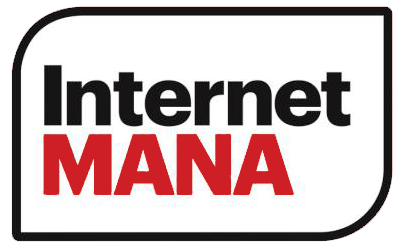What’s going on with the police? – John Minto
Posted on January 23, 2013 by admin in John Minto, Mana BlogRecent incidents should make us think carefully about what’s going on with the police and the increasing tendency for irresponsible, undisciplined actions to inflame rather than resolve situations peaceably.
Instead of using long-standing practices of working to defuse difficult situations, too many police are reaching for weapons instead.
This trend has been exacerbated by the progressive arming of the police over recent years.
In the most recent high-profile case a police constable in Kawhia is off work when he sees a young man he believes has breached his bail conditions. So the policeman goes home, puts on his police uniform, arms himself with a pepper spray, a taser and a pistol and then proceeds to confront the young man on a Kawhia street in the presence of a large group of the man’s friends, some of whom had been drinking.
It doesn’t take much brainpower to see that a young man in the middle of a large group of his mates is unlikely to come quietly on a disputed claim about bail conditions.
The inevitable outcome was a confrontation in which the policeman used his pepper spray, then taser and finally took out his pistol. Inevitably his actions provoked huge disorder and it’s likely we’d have had another Stephen Wallace (Wallace was shot dead by police in Waitara in 2000 after they confronted him as he smashed windows in the town’s main street) without members of the public intervening as they did.
The young man and his father now face serious charges of assault on police as well as already having been pilloried in the media by the police and subject to abusive, uninformed commentary by the general public based on misinformation the police provided the media.
What was this policeman thinking? Nothing rational for sure. He had lots of options to deal with the situation – the most sensible would have been to visit the man at him home – but chose the most likely option to lead to a riot.
Two other cases I’ve been involved with in the last six weeks also involve police exacerbating situations rather than simple steps to defuse potentially difficult situations.
One was last weekend when a group of people from the Waihopai spybase protest (the base that spies on Kim Dotcom (and the rest of us) for the US) walked down the driveway with a letter for the base commander. They were stopped by a group of four police and told they were not permitted to proceed further whereupon the police were asked to themselves deliver the letter.
The outcome was that one of the four, a police sergeant, screwed the letter into a ball and threw it on the ground. It was a childish, provocative action well outside any conceivable police role to ensure protest rights are upheld. Rather than prevent a breach of the peace, which police are required to do, he came close to provoking one.
On the same protest the same police sergeant was wearing a taser on his belt despite standard police operating instructions for the taser saying quite plainly:
“The EMI device (taser) is not to be carried by members rostered for duty at demonstrations”
Perhaps it’s a case of small town cops thinking the rules don’t apply to them.
The second case involved the policing at the TTP demonstration in Auckland’s Skycity casino on 8 December last year.
Here I’ll quote the letter of complaint I sent to the police on behalf of Global Peace and Justice Auckland after the demonstration: (Sorry it’s so long but it makes important points) Complaint re police conduct on 8 December Global Peace and Justice Auckland is hereby lodging a formal complaint regarding the police handling of the anti-TPP protest at Auckland’s Skycity casino on 8 December this year.
Our complaint covers four areas
1. The foolish and provocative actions of the senior officer in command at the protest at Skycity and again at Aotea Square.
2. The cynical manipulation of a serious breach of police discipline to accuse the protest group of violent behaviour.
3. Using plain clothes police, possibly agent-provocateurs, to infiltrate the protest.
4. Passing wilfully misleading information to the public, via the media, about the action of protestors.
Regarding Point 1:
Many of us in GPJA have had many years of experience of organising and attending demonstrations but it is several years since we have seen police leadership which was so provocative and tactless. It was plain stupid. If police were wanting to incite a riot they went about it the right way.
Especially provocative was the intervention of the senior sergeant in charge of the protest to walk out and whack boxes from the hands of people who were putting the remaining few petition boxes on the fire. It was obviously a symbolic protest and common sense said it came from the frustration of having the agreed TPP organisers not front up to accept the 750,000 signature petition. Fire is often part of protests where flags are burned for example and but this seemed to be lost on police. It was a situation where tact and diplomacy was required but there was none on show.
This happened as myself and others were organising the protest group to leave Federal Street together although I appreciate that at that point this may not have been obvious to the officer in charge.
Later in Aotea Square the same officer turned up with a group of police and proceeded to arrest a young woman. She wasn’t “asked to come quietly” but was grabbed and manhandled on the ground by several police in a manner which caused alarm and distress to witnesses.
The timing and the manner of her arrest could easily be predicted to lead to the near riot which resulted. In all our years of protest we have never seen a crowd line up to abuse the police in such a manner as happened as the police marched out of the square.
Regarding Point 2:
After the protest a senior officer was recorded from the public waiting area of the watch house reporting to his superior that a police officer had “broken ranks” and charged into the crowd in Federal Street to arrest someone. That was an accurate description of what happened.
However the police statement to media said two officers had become “separated, attacked and kicked numerous times” by protestors. This was demonstrably false as indicated by multiple witnesses and the extensive video footage from the scene. They had not become separated but separated themselves.
They were not attacked but attacked others and they were not kicked numerous times if at all.
Turning a breach of police discipline like this into a public attack on the protest group was nasty, vindictive and small-minded.
Regarding Point 3:
It is provocative to have plain clothes police in demonstrations as on Saturday. If any of the protest group dressed up as police and mingled with police they would be arrested for attempting to impersonate police.
We do not see not much difference with police impersonating protestors (or were other agencies involved?)
When people gather to exercise their right to protest under the Bill of Rights Act they have a right to be treated with respect and a right not to be disrespected by police. It follows that they have a right to expect their fellow protestors are who they claim to be rather than possible agents of the state as occurs under totalitarian regimes elsewhere.
Regarding Point 4:
Anyone reading the police statement and the media reports based on it could be forgiven for believing the protest group had tried to break into the hotel, had lit multiple fires in the street requiring fire service attention and had attacked and injured police officers including “stomping” on one officer’s head.
This was a tissue of outrageous lies and dramatic overstatement. It appears to have been presented to the media from the police public relations team at least partly to disguise what was an appalling failure of policing at the protest.
The media and public have a right to expect the police will report accurately and fairly on any situation and not use the full public relations resources of the police to feed lies and misinformation into the public arena. To do so is to undermine the very rights people have to engage in protest which in turn is the oxygen on which our democracy depends.
We wish you to engage in a robust investigation of these complaints and we look forward to hearing from you.
Police and the media. It’s worth pausing to look more closely at the role of the media in reporting these recent incidents.
The police are always the first to get their version of events out into the public. They have full-time PR staff to frame the public discussion from the outset around any controversial situation.
Take the Kawhia example. The initial stories about a lone police officer being attacked by a mob in Kawhia sounded horrendous but essential details were missing and there was no context to the situation. Later police refused to comment when media suggested the arrest was all for a simple breech of bail conditions and also refused to comment when video of the policeman with his pistol out was shown on TV.
The police didn’t want us to know the whole story – only their sanitised version of events. We would probably have been none the wiser but for the fact it was a holiday story which got more exposure and more questioning than would otherwise have been the case.
Police accountability
The police can only be held accountable for their actions if the public is properly informed but in my experience this is the exception rather than the rule.
The police are always happy to talk about how difficult their job is but they regularly feed highly selective information to a frequently gullible public. Then when a complaint is made they hide behind the weak accountabilities of the (so-called) Independent Police Conduct Authority which has few resources and in most cases gets the police to investigate the complaint in any case.
It’s natural for those in the public eye to emphasise the good things they do and try to hide the others. The police are no different. But when they hold such extensive responsibilities for the safety of the community and enormous powers over individual liberty then they must be held to higher standards of accountability than at present – anything less is a danger to democracy.
Most importantly the police need to refocus on defusing and resolving situations by discussion and negotiation.
Leaving the weapons at home would be a good first step.
John Minto



Jacquelyne Taylor says:
Post Author January 24, 2013 at 10:14 pmI fully agree with most of your conclusions John on all the incidents mentioned I bore witness to personally, or have similarly studied recently as a person independent of Mana or GPJA as I am very concerned at what has been occurring at peaceful protests as diverse as the Uni student Blockade the Budget action to the recent ones at Glen Innes as well as the constant angling by some for arming all police which will lead to terrible travesties given the increasing propensity by some to use egregious violence when it is far from necessary to do so I believe. .
I am still currently waiting for progress on an assault on me after Karyn was hurt & arrested but later released without charge I understand.
This was at the same TPPA protest outside the Sky City Convention Centre and carried out by a massive Security guard, unprovoked by me.
It will be interesting to see what they come up with but at least it IS being investigated by Auckland Central who seemed quite happy to look into that.
Be good if they actually used criteria you have mentioned, that states peaceful protesting is allowed under the Bill of Rights..
Assault to prevent a witness from potentially bearing witness to a potentially excessive force arrest most certainly isn’t.
I’ll keep you informed if you wish?
Muzza says:
Post Author February 3, 2013 at 12:00 pm“In all our years of protest….”. Pretty much sums it up. Always the negative, never the positive. Still, that’s the way of socialists/communists – no need to work, we’ll steal it from someone else. You seem to fit right in with these loopy hories…..never a day’s work in your life, and biatching and moaning because you have nothing. Wah, wah, wah…it just isn’t fair is it?